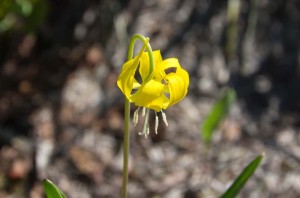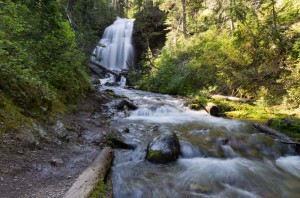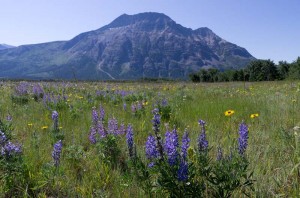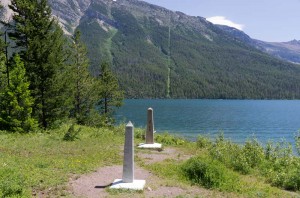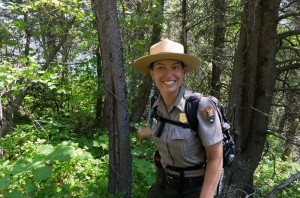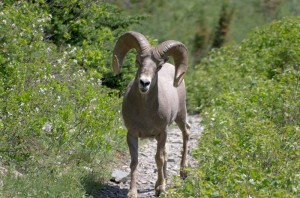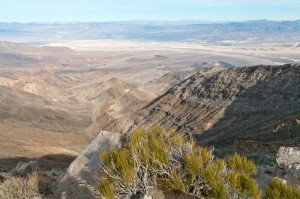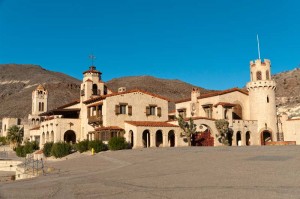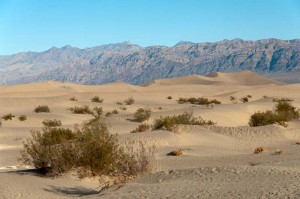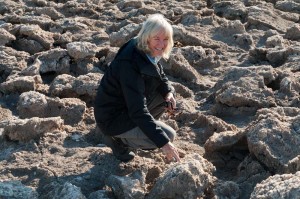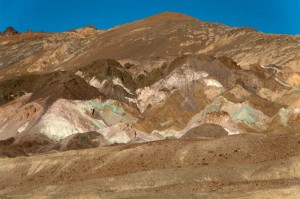We stopped at Pincher Creek to get gas, groceries, and some screws and washers to fix another of the broken braces on the trailer skirting. I also bought a small fan for use in the trailer, as we won’t have electricity for the next five days, and so will have to run it from the inverter. We really appreciated having a fan like that in Australia, and since it is so warm out right now we think it will be good here as well.
We saw a doe and fawn by the side of the road just before we got to Pincher Creek. The doe was on one side of the road, the fawn the other, but the doe walked back across the highway. We were nearly stopped and so could see the two of them out the Tahoe window.
We then drove north on highway 22 towards Longview. I’d noticed a sign about the Bar U Ranch National Historic Site quite a bit earlier, and so when I saw another sign indicating it was a kilometre ahead, decided to stop, especially as it was time for lunch anyway. We went into the small museum, which you can tour for free, and decided to eat before we paid for entrance to the grounds.
It was a really nice way to spend a few hours, touring the old ranch site. Many of the buildings have been restored with displays of ranch life. At the cookhouse, one of the on-site interpreters was baking rhubarb crisp in the wood oven. It was pretty hot in the kitchen, given that it was nearly 30 degrees C outside, and she had a good hot fire going. We also saw the display of the round-up camp, where they have a chuckwagon and some wall tents set up. The interpreter here had a fire going with kettles of boiling water and coffee hanging from hooks supported by branding irons. We had a cup of tea, and she explained how the round-ups worked, with cowboys from several ranches working together to identify and brand cattle in the spring, and send them to market in the fall. Later we came back and had some freshly baked bannock.
We got a short ride on a wagon drawn by two Percheron horses, and then got off to watch a ferrier as she shoed one of the massive feet on another of the Percherons. The driver unhitched the horses from the wagon while we were watching, and led them to the river for a drink. Some young children had been watching in awe as the horse shoe was nailed on, and then followed down to watch the horses get a drink.
We walked back and visited some of the other display buildings, then got back on the wagon. We got a nice long ride as the driver took us through a field and a very lovely view out over the ranch site, rather than the short direct route back to the information centre.
It is unfortunate that the Canadian government has cut funding for Parks Canada, which includes these important heritage sites like the Bar U Ranch. They are such an important part of maintaining our culture and history. The cost of running them is small compared to the wealth of benefit to Canada in helping to understand our heritage as a nation, and why we are the people and country that we are today.
After a very nice afternoon at the ranch, where the weather was spectacular, we headed to Peter Lougheed Park to camp. The drive across on highways 540 and 40 is beautiful. It passes over the Highwood Pass, which at 2280 m is the highest highway point in Canada. We are in the Boulton Creek campground. Our site is very long and narrow, so it was a careful backing in with the trailer. There is just room to get around the sides of the trailer before the gravel pad drops off about three feet sharply on each side. After supper tonight I fixed a leak in my bike tire, and then we went for a ride around the campgrounds.



